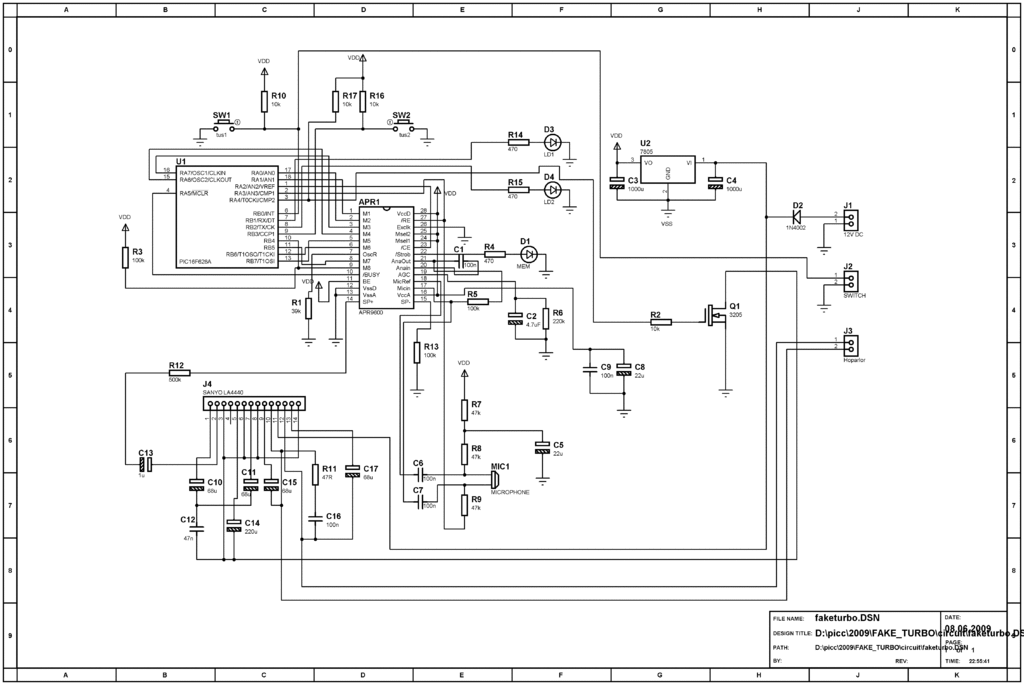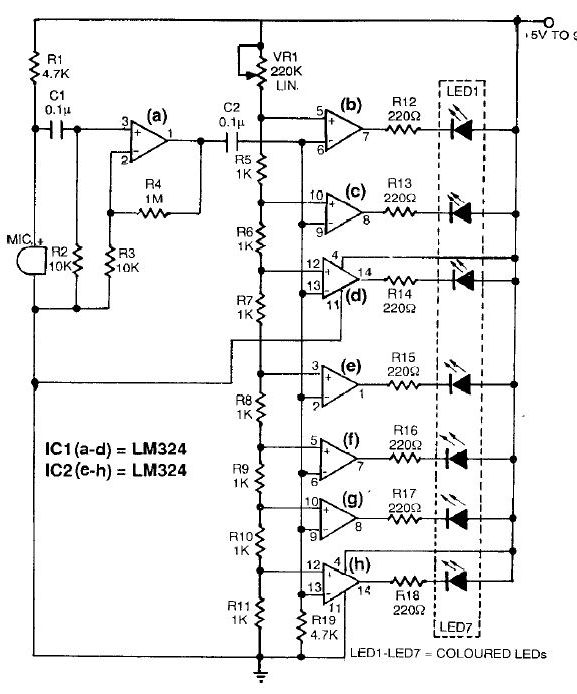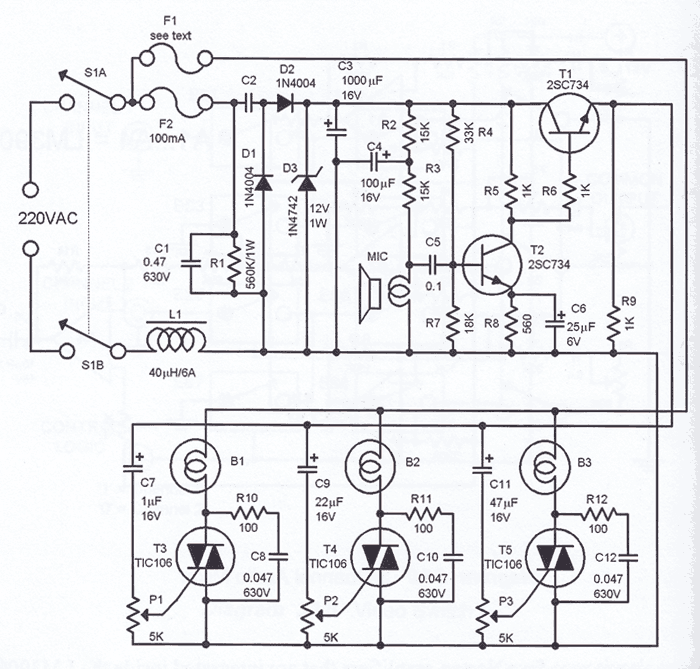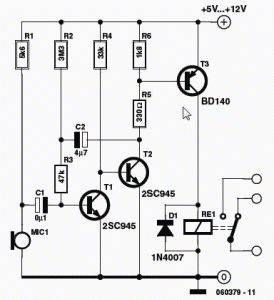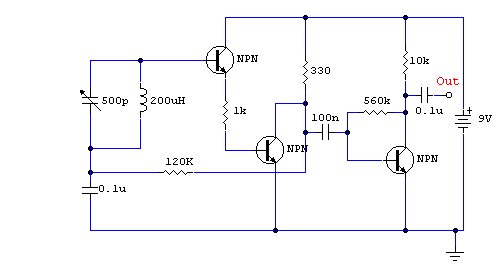
Acoustic Sound Receiver
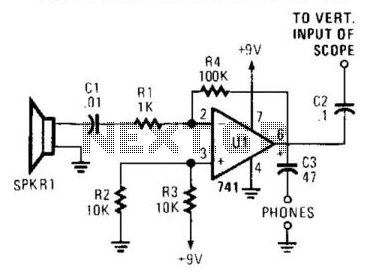
The receiver is an audio amplifier connected to SPKR1, a piezo speaker utilized as a microphone. An oscilloscope or headphones can serve as a detector. The oscilloscope can be triggered horizontally by the transmitted acoustic pulse, while the vertical display can indicate the delay time, thus allowing for distance measurement.
The described circuit features an audio amplifier functioning as a receiver, which processes signals obtained from SPKR1, a piezo speaker configured to act as a microphone. The piezo speaker is sensitive to acoustic waves, converting sound energy into electrical signals for further amplification.
The audio amplifier enhances the weak signals from the piezo speaker, enabling better detection and analysis of the received acoustic pulses. This amplification is crucial for applications that require precise measurement of sound waves, such as in distance measurement systems.
The system includes an oscilloscope or headphones as detection tools. The oscilloscope is particularly advantageous for visualizing the signals. It can be configured to trigger on the horizontal axis by the arrival of the transmitted acoustic pulse, allowing for a time-based analysis of the signal. The vertical axis displays the amplitude of the received signal, which correlates to the strength of the acoustic pulse.
Additionally, the delay time between the transmitted pulse and the received signal can be measured using the oscilloscope. This delay corresponds to the distance the sound wave traveled, which can be calculated using the speed of sound in the medium. This setup is useful in various applications, including sonar systems, distance measuring devices, and acoustic research, where accurate timing and signal analysis are critical.
Overall, this circuit exemplifies a practical application of audio amplification and signal detection, facilitating precise measurements and analyses of acoustic phenomena. The receiver is an audio amplifier fed by SPKR1, a piezo speaker that is used as a microphone. A scope or headphone s can be used as a detector. The scope can be triggered horizontally by the transmitted acoustic pulse; the vertical display can be used to drive the delay time, and hence the distance. 🔗 External reference
The described circuit features an audio amplifier functioning as a receiver, which processes signals obtained from SPKR1, a piezo speaker configured to act as a microphone. The piezo speaker is sensitive to acoustic waves, converting sound energy into electrical signals for further amplification.
The audio amplifier enhances the weak signals from the piezo speaker, enabling better detection and analysis of the received acoustic pulses. This amplification is crucial for applications that require precise measurement of sound waves, such as in distance measurement systems.
The system includes an oscilloscope or headphones as detection tools. The oscilloscope is particularly advantageous for visualizing the signals. It can be configured to trigger on the horizontal axis by the arrival of the transmitted acoustic pulse, allowing for a time-based analysis of the signal. The vertical axis displays the amplitude of the received signal, which correlates to the strength of the acoustic pulse.
Additionally, the delay time between the transmitted pulse and the received signal can be measured using the oscilloscope. This delay corresponds to the distance the sound wave traveled, which can be calculated using the speed of sound in the medium. This setup is useful in various applications, including sonar systems, distance measuring devices, and acoustic research, where accurate timing and signal analysis are critical.
Overall, this circuit exemplifies a practical application of audio amplification and signal detection, facilitating precise measurements and analyses of acoustic phenomena. The receiver is an audio amplifier fed by SPKR1, a piezo speaker that is used as a microphone. A scope or headphone s can be used as a detector. The scope can be triggered horizontally by the transmitted acoustic pulse; the vertical display can be used to drive the delay time, and hence the distance. 🔗 External reference
